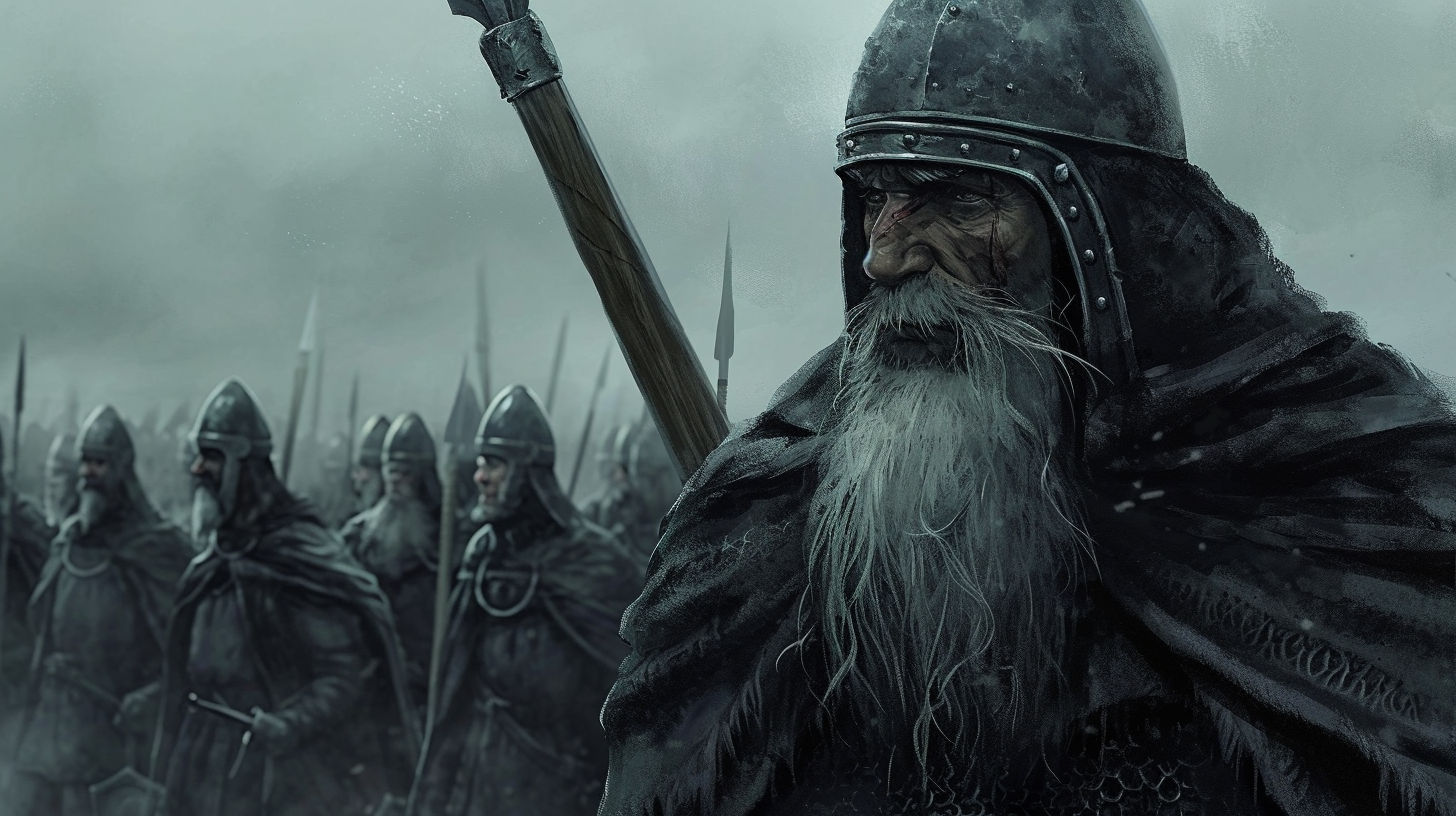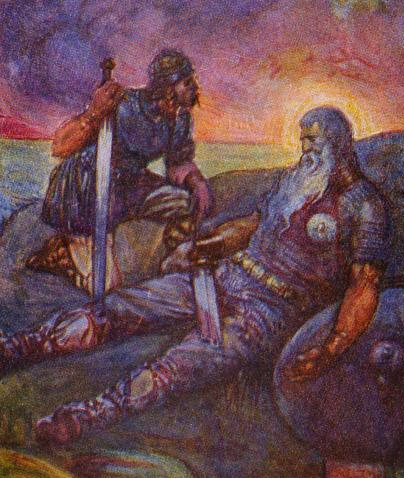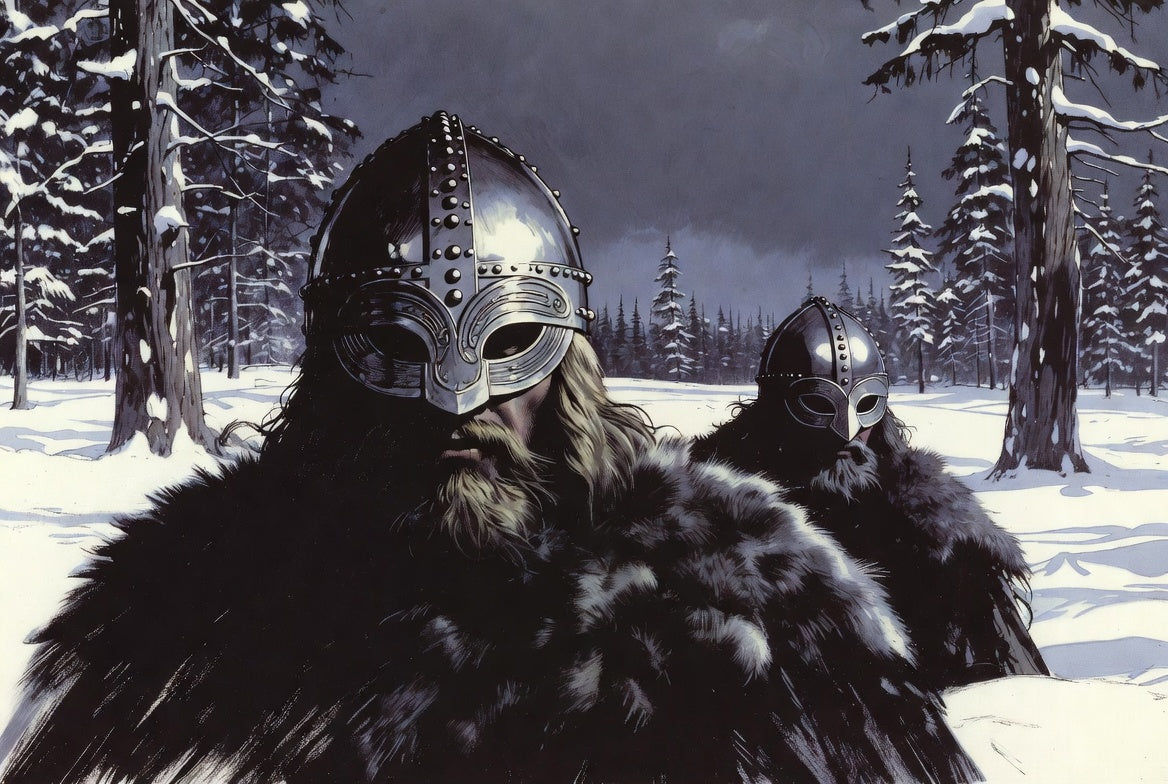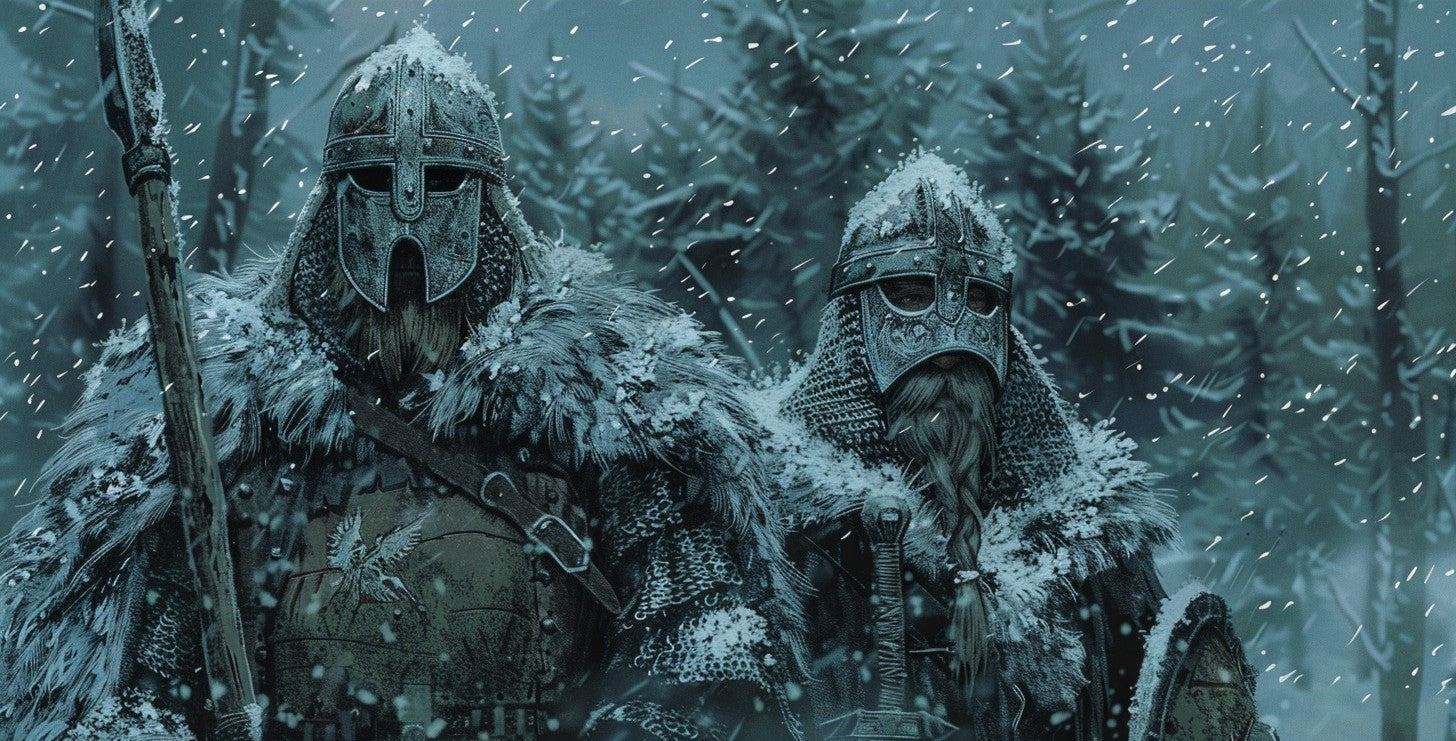
Holger Danske: The Legendary Guardian of Denmark
In the shadowy depths of Kronborg Castle, beneath the stone floors where Hamlet once walked in Shakespeare's imagination, a figure slumbers. His beard has grown into the marble table before him, his fingers grip a sword that has not tasted battle in centuries. This is Holger Danske, the legendary guardian of Denmark, waiting for the hour of his nation's greatest need.
Origins of the Holger Danske Legend

Historical Roots
The tale of Holger Danske is as old as Denmark itself, a story passed down through generations like a precious heirloom. But where did this legend begin? To unravel this mystery, we must journey back to the mists of the Middle Ages, where history and myth intertwine like the threads of a tapestry.
Literary Evolution
Like many great legends, Holger Danske's story has been shaped by countless storytellers over the centuries. Each iteration added new layers, new details, until the historical figure became the mythical hero we know today. It's a testament to the power of storytelling, how a single tale can evolve and grow, taking on a life of its own.
The Man Behind the Myth

Ogier the Dane
At the core of the Holger Danske legend lies a kernel of historical truth. Enter Ogier the Dane, a figure from the court of Charlemagne. This warrior, mentioned in historical chronicles, fought alongside the great Frankish king in the 8th century. But was he truly Danish? The answer, like much of his life, is shrouded in mystery.
Carolingian Connections
Ogier's exploits caught the imagination of medieval troubadours. In their songs and stories, he became a paragon of chivalry, a warrior of unmatched prowess. These tales spread across Europe, each retelling adding to his legend. In Denmark, he became something more - a national hero, a protector, a symbol of Danish identity.
Holger Danske in Danish Folklore

The Sleeping Hero
In Danish folklore, Holger Danske transformed from a mere mortal into something far greater. He became the sleeping hero, a common motif in European mythology. Like King Arthur in Britain or Frederick Barbarossa in Germany, Holger was said to slumber, waiting for the moment when his people would need him most.
Kronborg Castle's Guardian
Kronborg Castle, that imposing fortress guarding the Sound, became Holger's legendary resting place. Deep in its casemates, so the story goes, he sits at a stone table, his beard grown into the rock, his fingers clasped around his sword. It's an image that captures the imagination, a visual representation of Denmark's enduring spirit.
Literary Interpretations

Medieval Chansons de Geste
The earliest literary appearances of Holger Danske come from the chansons de geste, epic poems of the Middle Ages. In these tales, he is Ogier le Danois, a paladin of Charlemagne, performing feats of valor across Europe and the Holy Land. These stories laid the foundation for the legend, giving Holger a backstory worthy of a national hero.
Hans Christian Andersen's Retelling
It was Hans Christian Andersen, Denmark's master storyteller, who truly cemented Holger Danske in the national consciousness. In his 1845 retelling, Andersen transformed Holger from a medieval warrior into a timeless protector of Denmark. His version of the legend, with its vivid imagery and patriotic undertones, became the definitive account for generations of Danes.
Holger Danske in Danish Culture
Symbol of National Resistance
Throughout Denmark's history, Holger Danske has been more than just a legend. He has been a rallying point, a symbol of Danish resilience in the face of adversity. In times of war and occupation, the Danish people have looked to Holger, drawing strength from the idea that their sleeping hero might awaken to defend them.
World War II and the Danish Resistance
During the dark days of World War II, Holger Danske took on new significance. The Danish resistance movement adopted his name, using it as a codename for their operations against the Nazi occupiers. In this way, the ancient hero became a modern symbol of defiance and hope.
Artistic Representations

Sculptures and Statues
Holger Danske's legend has inspired artists for centuries. Sculptures of the sleeping hero can be found across Denmark, each one a testament to his enduring place in the national imagination.
The Kronborg Castle Statue
Perhaps the most famous representation of Holger Danske is the statue in the casemates of Kronborg Castle. Created by Hans Pedersen-Dan in 1907, this imposing figure brings the legend to life. Visitors to the castle can see Holger as generations of Danes have imagined him - powerful, resolute, ready to rise at a moment's notice.
Paintings and Illustrations
Beyond sculpture, Holger Danske has been a popular subject for painters and illustrators. From medieval manuscripts to modern graphic novels, artists have sought to capture the essence of this legendary figure. Each interpretation offers a new perspective on the sleeping hero, keeping the legend fresh and relevant for new generations.
The Enduring Legacy of Holger Danske
Why does the legend of Holger Danske endure? Perhaps it's because he represents something fundamental to the Danish spirit - resilience, duty, the willingness to stand up for one's people. In a world of constant change, there's comfort in the idea of a timeless protector, always ready to defend the nation.
But Holger is more than just a comforting myth. He's a mirror in which the Danish people can see their best selves reflected. He embodies the virtues they aspire to - courage, loyalty, selflessness. In times of crisis, the legend of Holger Danske reminds Danes of their strength, their history, their shared identity.
Conclusion
From the mists of medieval legend to the heart of modern Danish identity, Holger Danske has journeyed far. He has been a warrior, a folk hero, a resistance symbol, and a cultural icon. His story has been told and retold, each generation finding new meaning in the tale of the sleeping guardian.
As long as there is a Denmark, there will be a Holger Danske. He sleeps in Kronborg Castle, in the pages of books, in the imaginations of children, and in the hearts of the Danish people. And should Denmark ever face its darkest hour, who knows? Perhaps the old hero will awaken, ready to defend his beloved homeland once more.
Until then, Holger Danske remains what he has always been - a powerful symbol of Danish resilience, courage, and national spirit. In the end, perhaps that is his true power. Not the strength of his arm or the sharpness of his sword, but his ability to inspire, to unite, to remind a nation of its strength and its values. In this way, Holger Danske is not just sleeping - he is very much alive.
FAQs
- Is there any historical evidence for the existence of Holger Danske?
While Holger Danske as we know him is largely legendary, he may be based on a historical figure named Ogier the Dane, who served in Charlemagne's court.
- Why is Holger Danske associated with Kronborg Castle?
Kronborg Castle became linked to Holger Danske through folklore, particularly after Hans Christian Andersen's retelling of the legend in 1845.
- Did the Danish Resistance in World War II really use the name Holger Danske?
Yes, one of the largest Danish resistance groups during World War II used "Holger Danske" as their name, inspired by the legendary figure.
- Are there other "sleeping hero" legends similar to Holger Danske?
Yes, many cultures have similar legends, such as King Arthur in Britain and Frederick Barbarossa in Germany.
- How is Holger Danske remembered in modern Denmark?
Holger Danske remains an important cultural symbol in Denmark, featured in literature, art, and even branding. The statue at Kronborg Castle is a popular tourist attraction.
References
"Holger Danske (Ogier the Dane)" by Madieta is licensed under CC BY-NC-SA 2.0.
"File:According to a legend linked to Arthurian myth, a Danish king known as Ogier the Dane, was taken to Avalon by Morgan le Fay. He returned to rescue France from danger, then travelled Kronborg castle, where he - panoramio (1).jpg" by Luis Antonio Carrasc… is licensed under CC BY 3.0.








